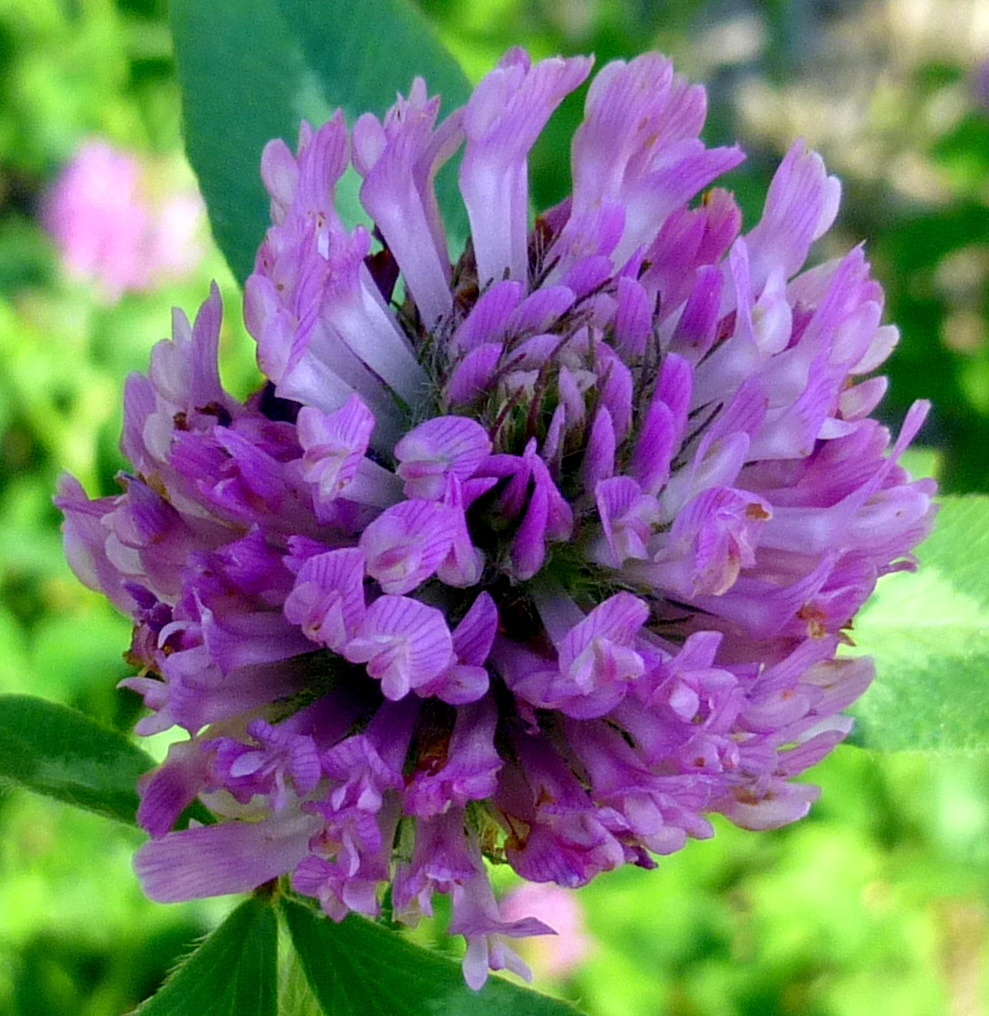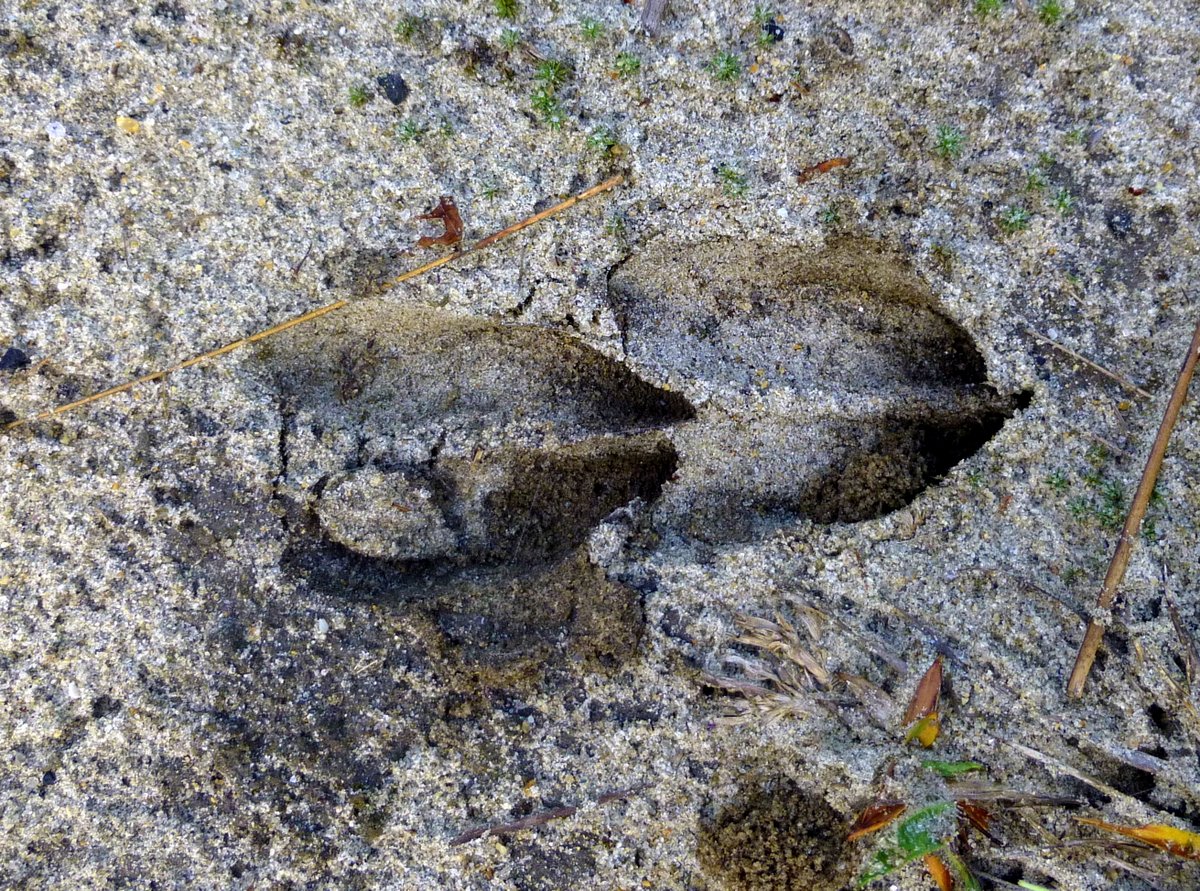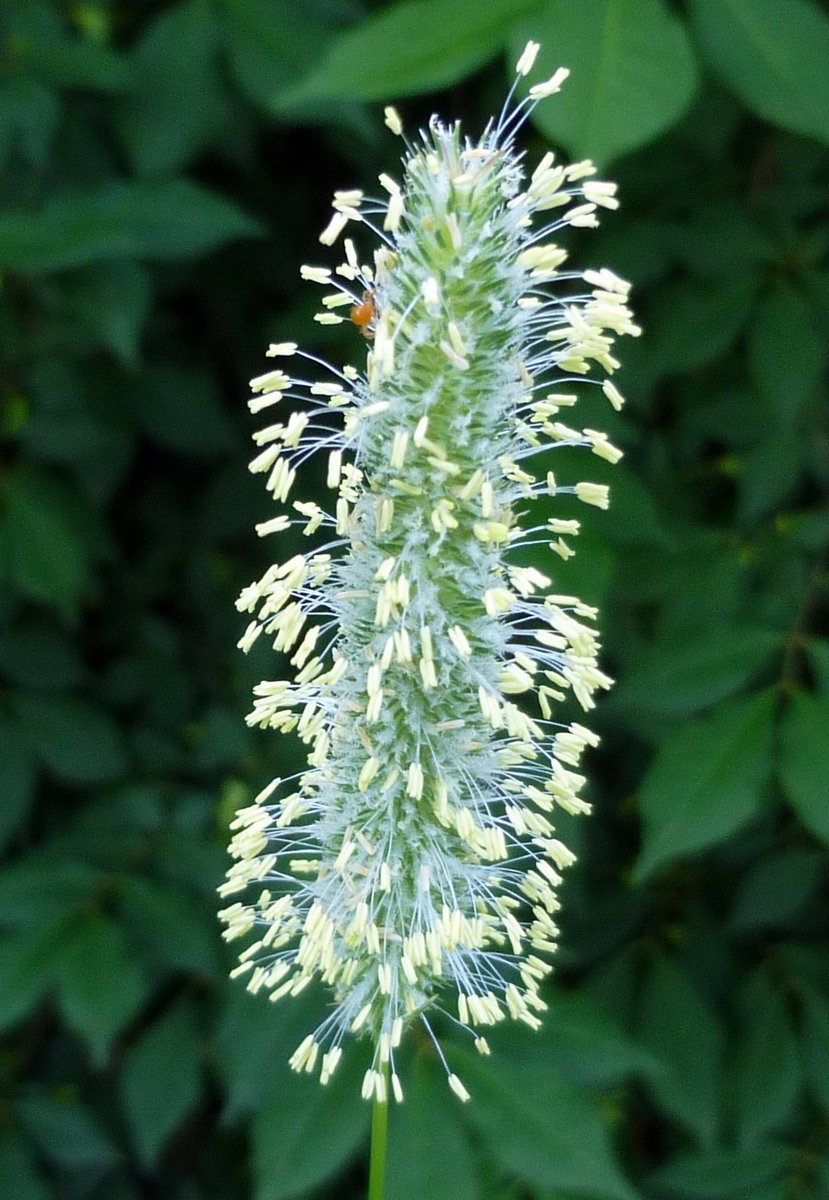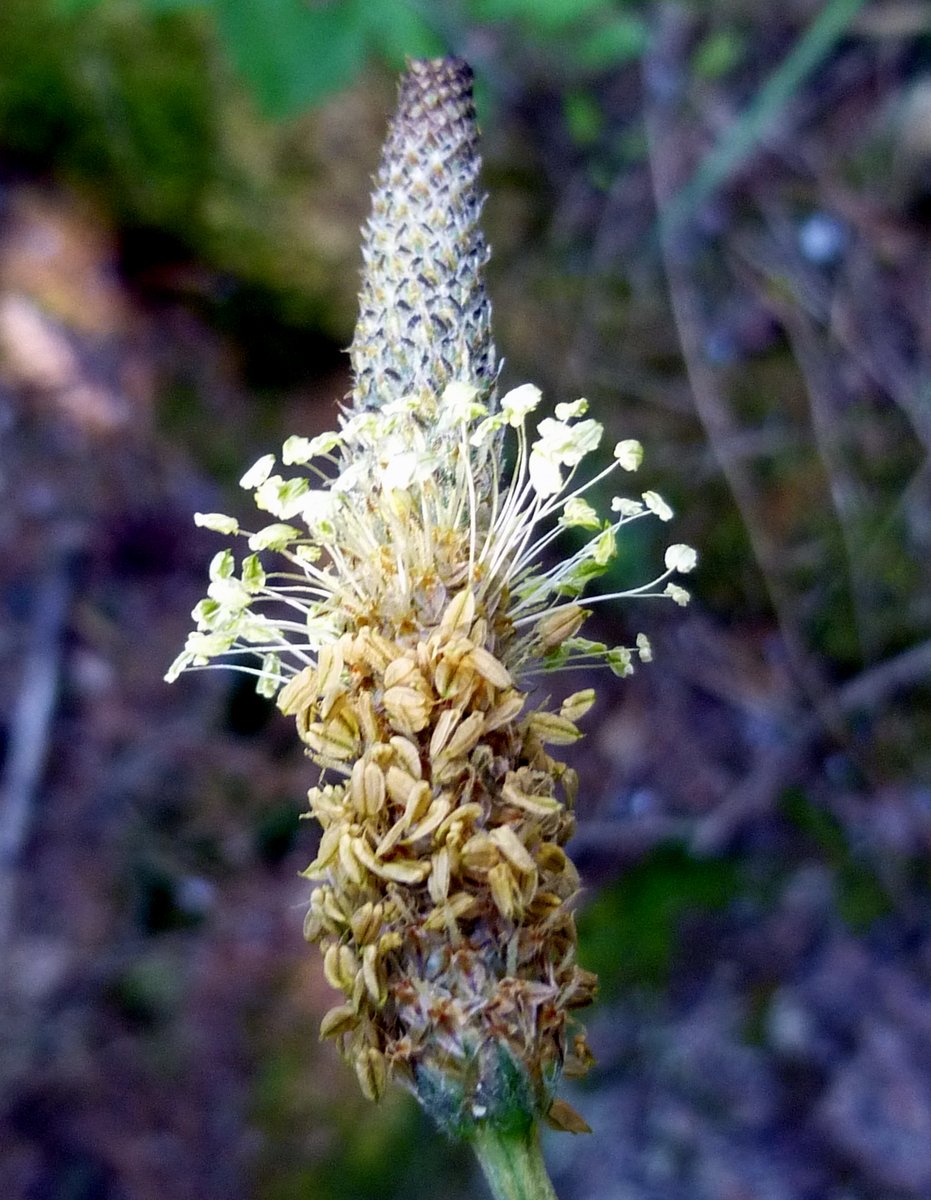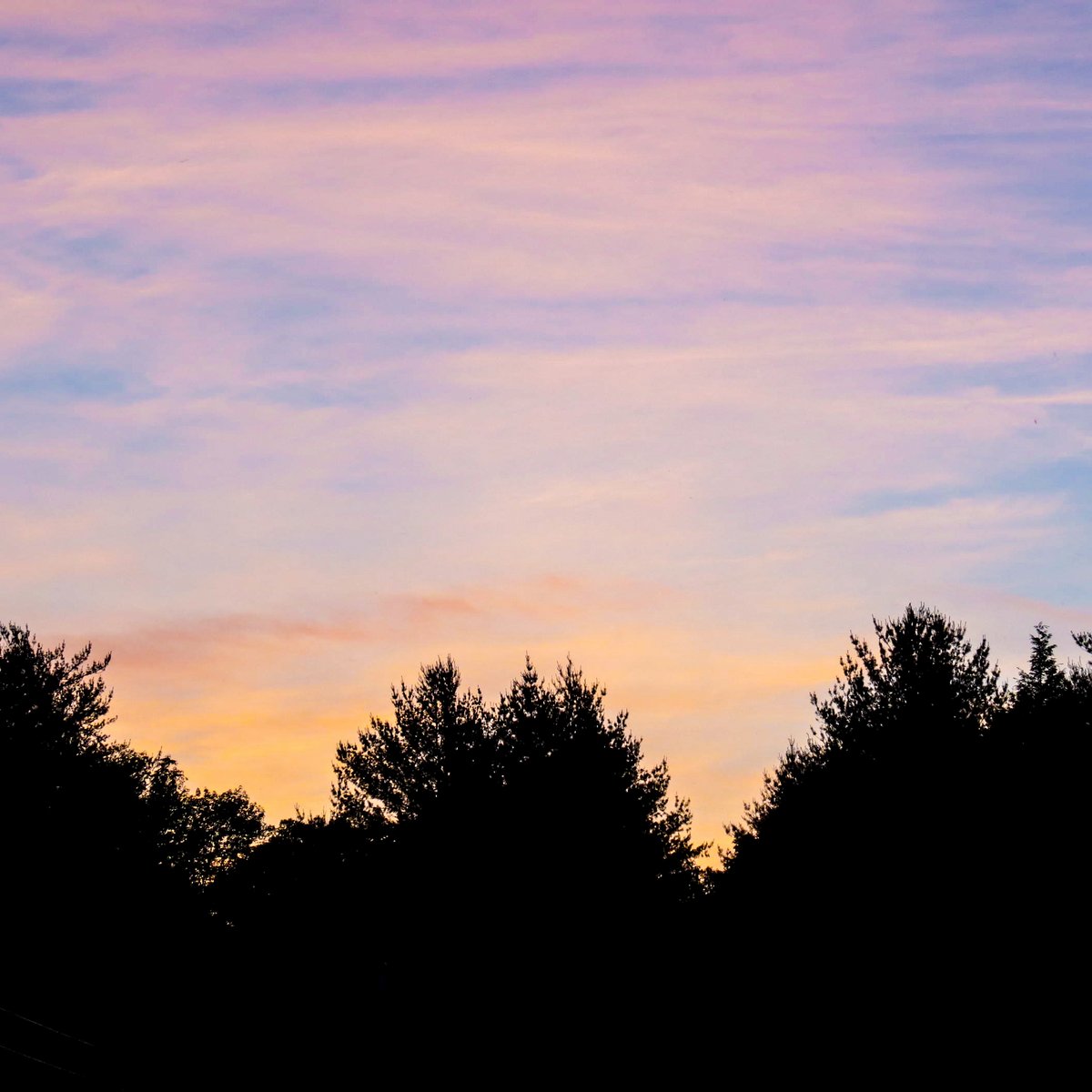
I’ve been waiting for the Ashuelot River to return to normal levels so I could visit the forest I used to spend a lot of time in as a boy. It’s a beautiful place on land now owned by the local college, and they’ve mowed a trail through it. The trail runs very close to the river and that’s what the fence posts seen in this shot are for; to warn people that the river is right there, just feet away. It’s hard to tell due to all the growth but I learned years ago that there are otter slides and muskrat tunnels and sink holes that are easily fallen into. I stayed on the trail and in all the time I spent here I saw only an occasional glimpse of the river. I was too busy enjoying the beauty of the place.

When I was a boy there were no mowed trails here so my friends and I just found our own way through the woods, using game trails or other natural pathways. There have always been lots of birds and animals here and now the land is a designated wildlife management area. Since it floods badly when the river is high it really couldn’t be used for anything else. Though the sign points to wildlife “management” I think the management consists of letting the wildlife just be and do as it will.

I immediately started seeing insects when I got here, including this ebony jewelwing damselfly. They like to hunt around forested streams. There is also a river jewelwing which hunts riverbanks but I didn’t see one of those. There was certainly plenty for it to eat here. Never in my life have I seen swarms of mosquitoes like I did here. Even with bug spray on they got me. All the rain and flooding this year has led to a perfect storm of them and when you meet someone on a trail that’s all they talk about.

What I think might be a cloudless sulfur butterfly sat on a leaf, looking a bit like a leaf itself. It also looked as if it was having antennae problems. There are also clouded sulfurs, but they have black edging on their wingtips.

I saw what seemed to be very early New England asters in bloom. Many of the asters that grow here have the deepest colored purple flowers that are my favorites, but I don’t usually start looking for them until the end of September.

An eastern cottontail warmed itself in the morning sunshine. It let me have a few photos and then hopped off into the tall grass. I felt sorry to have disturbed its peace.

Something that surprised me was finding marsh bellflowers here. This is only the second place I’ve seen these small flowers, each time very near the river. I’m not surprised that they would like it here in this wet ground.

I found a Japanese beetle on a hedge bindweed blossom. As I pointed the camera at it, it reared up on its hind legs in challenge. “This is my flower,” it said. By the end of the day the blossom had most likely been chewed full of holes.

The trail closes in a bit in places and that’s because the river is close on one side and old silver maples crowd in on the other. Most of the trees here are silver maples with a few red maples. They’re the only trees that can stand the almost yearly flooding. In many places all the undergrowth had been flattened by the flood water but it wasn’t too bad right here.

This tall grass was very beautiful caught in a sunbeam like it was. I think it is tall woodreed, which is a grass that likes shaded, boggy places. It must have been about six feet tall and it stopped me in my tracks. All the gray in the background is caused by plants that were under water not long ago. The rain hadn’t washed the silt off them yet.

What I think might be a hairy footed flower bee sat on a leaf. These solitary bees are said to be the first to emerge in spring and like to visit pulmonaria flowers, which are some of the earliest to appear. They are native to Europe and North Africa, but have been introduced into Canada and the U.S. This is the only one I’ve seen.

This was another unusual bee because it was as big as the end of my thumb; easily the biggest bee I’ve seen. I think it must be some type of carpenter bee but I’m not sure.

Roman Emperor Marcus Aurelius once recommended that we “Dwell on the beauty of life. Watch the stars, and see yourself running with them.” That was just what I was doing here; a universe full of Stellaria pubera, the star chickweed, bloomed all along the trail and into the woods.
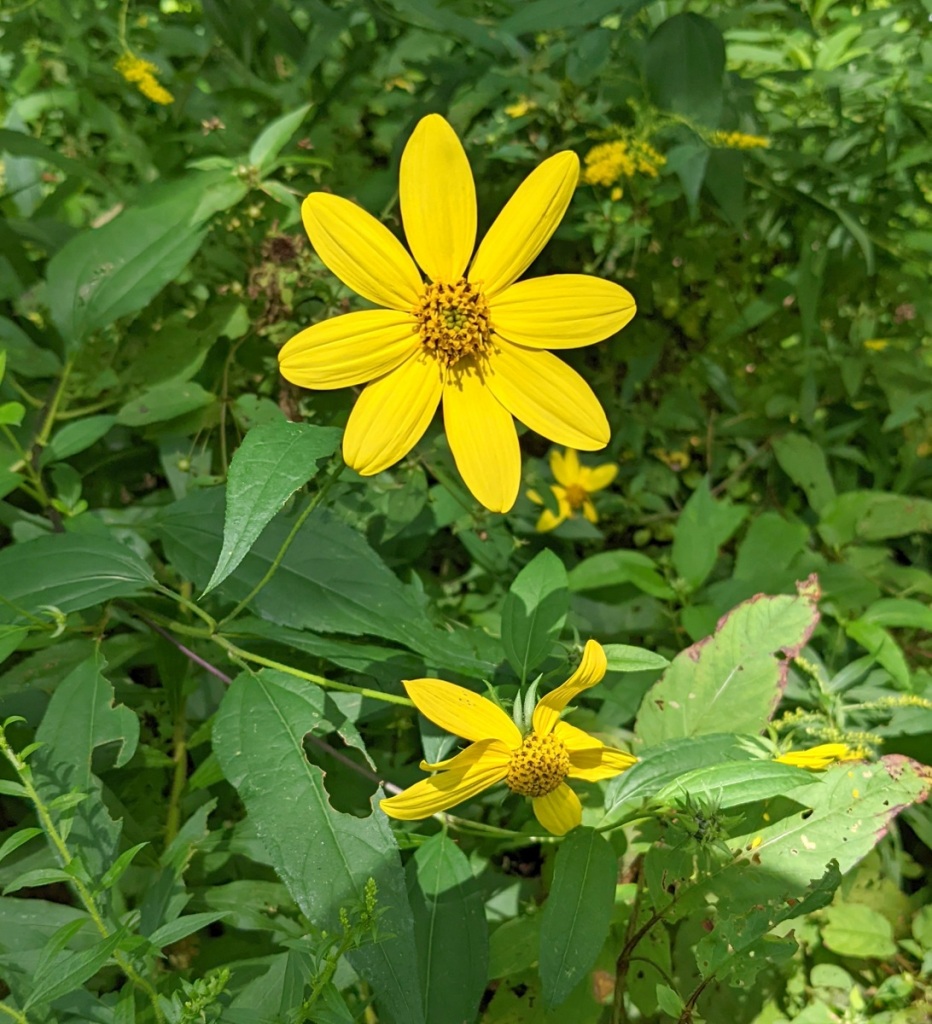
Woodland sunflowers, which had apparently been flattened by rain, were starting to lift up their heads.

I think there were more tall blue lettuce plants out here than I’ve ever seen in a single place. They like a bit of shade and wet ground to do their best, and they find both here. The flowers, each about the size of a pencil eraser, have leaned more toward white than blue this year.

For the first time I was able to get a fairly good photo of tall blue lettuce that shows where the “tall” in the name comes from. The undergrowth was about six feet tall and these plants soared many feet above it. I’d guess they were at leat twelve feet tall. It seems odd that such small flowers would appear on such a tall plant.

River silt, as fine as talcum powder, covered the trail where it had flooded, and then dried and cracked. When I see silt like this I always think about how many thousands of years it must have taken to build up the rich farmlands that are almost always found along our rivers.

This place has always been a source of wonder and as I walked along I thought of how lucky I was to spend my boyhood in such a beautiful place. Bordered by the railroad tracks I walked almost every day, it was an easy place to get to and I spent a lot of time exploring and learning from nature here. Anything a boy could want in nature I found here but I’ve always thought my friends and I came mostly because we simply loved the place. Even after all these years it’s still an easy place to love and now with the mowed trails, it’s even more beautiful than it used to be. I’ve never forgotten the silence, natural beauty, and freedom that I experienced here. It all led to a lifelong love of life.

Tall asters weren’t so tall after the rain was done with them. This one could barely lift its head out of the ferns, and it should be six feet tall.

Broom sedge isn’t a plant I see a lot of but there were large colonies of them here so they must like moist ground. I like its bristly, reddish seed heads.

Goldenrod glowed in the bright sunshine. There has always been goldenrod here for as far back as memory will take me, and it has always been beautiful. One thing I thought of that is lacking here these days are the big black and yellow spiders that used to be here. I used to love watching them but I haven’t seen one in a long time.

I spent parts of two different days here. On the first day it was so windy everything was thrashing around and branches were falling off the trees but it kept the bugs away. This little pearl crescent (I think) butterfly hung on with all it had as the goldenrod it clung to thrashed back and forth in the wind gusts. It took quite a few tries to get this not so great shot. Every time the wind would stop I’d bring the camera up, ready to get the shot, but as soon as I clicked the shutter it would start in again. I spent a lot of time just standing and waiting, using the patience the great blue herons taught me.

On the second day when the winds had calmed down I noticed that many of the thistles that live here had gone to seed and thistle down floated in the air. Since thistle seeds are a favorite of gold finches I thought I’d better walk over to the place where I usually find them.

I wasn’t disappointed; the beautiful little birds were here as they are every year, enjoying the fruits of the bull or spear thistles. I never noticed how their black forehead “hair” fell down over their eyes like it does. This one is a breeding male. The bad boy look must help him attract females.

He wasn’t going to waste time watching me watch him; he dug right in and the thistle down was flying. I’ve also watched them pull garden zinnias apart, throwing petals everywhere to get at the seeds. They also go for evening primrose and any other small seeded plantss. According to the Cornell School of Ornithology their natural habitats are weedy fields and floodplains, so it makes perfect sense that they would come here every year.
He who does not become familiar with nature through love will never know her. ~Friedrich Von Schlegel
Thanks for stopping in.













































































